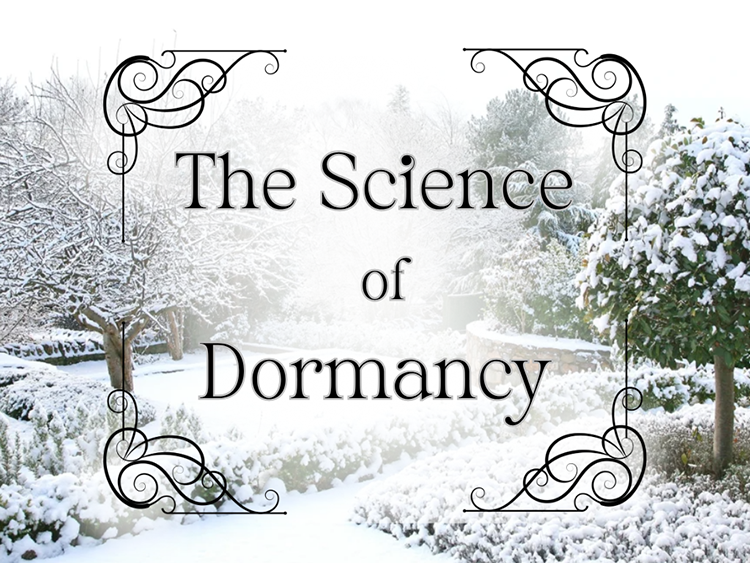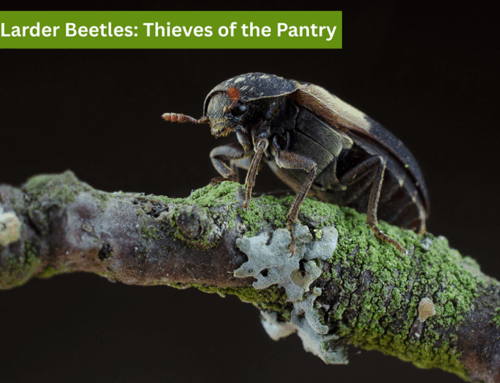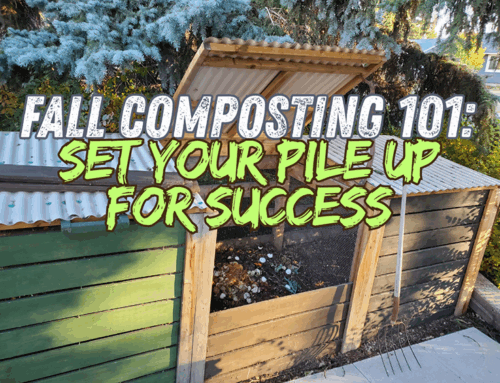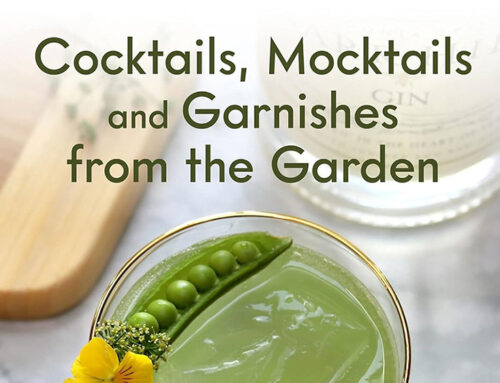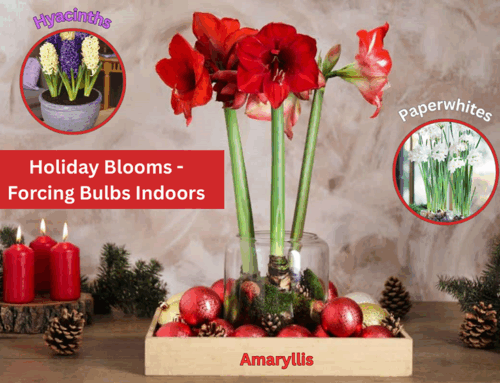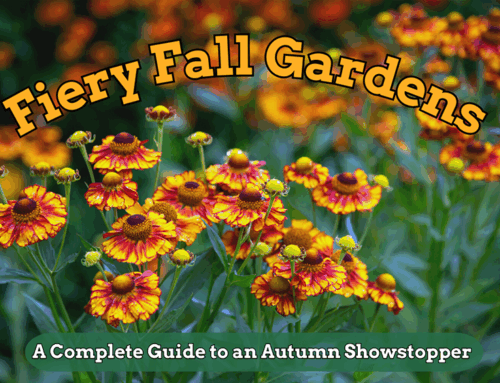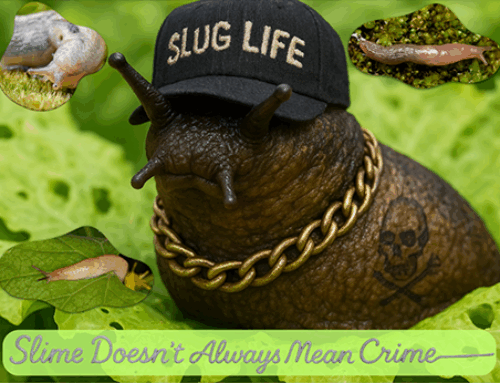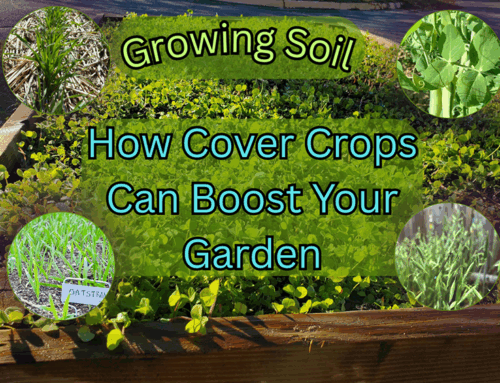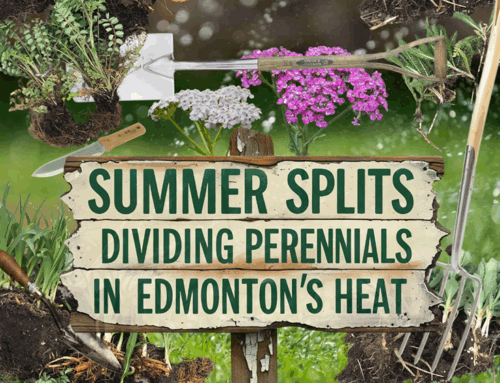The Science of Dormancy
by Brett Kerley
Exploring What’s Happening Under the Snow — Soil Microbes, Roots, and Perennials Quietly Preparing for Spring
When the first snow falls in Edmonton, it can feel like the garden has completely shut down. Beds are covered in white, trees are bare, and the whole yard looks lifeless. But beneath the surface, an incredible transformation is happening. Dormancy is not death. It is a period of rest, repair, and preparation that allows plants, soil microbes, and entire ecosystems to flourish once the thaw arrives.
Let’s dig into what’s really going on under the snow in a Zone 3-4 winter.
The Role of Dormancy
Dormancy is nature’s way of pressing “pause” on plant growth during unfavourable conditions. Perennials, trees, and shrubs enter a state where above-ground growth stops, metabolism slows dramatically, and energy is conserved for spring.
Without dormancy, many of our garden favourites wouldn’t survive winter at all. In fact, cold temperatures are required for many plants to flower or set fruit. This process, called vernalization, allows tulips, daffodils, peonies, and fruit trees to reset their internal clocks and prepare for the next growing season.
Soil Under Snow
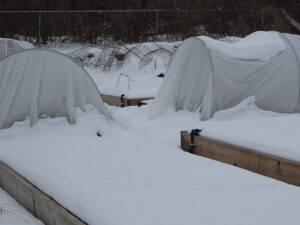 We think of soil as frozen and inert, but it is surprisingly active through much of the winter:
We think of soil as frozen and inert, but it is surprisingly active through much of the winter:
- Soil Microbes – Bacteria and fungi don’t completely stop when temperatures drop. Some stay active just below freezing, breaking down organic matter and slowly releasing nutrients into the soil.
- Snow Insulation – Snow acts as a natural blanket, trapping air and keeping the soil warmer than the frigid air above it. This stable temperature helps roots and microbes survive Edmonton’s -20°C cold snaps.
- Moisture Recharge – As snow melts, it infiltrates the soil, replenishing groundwater and giving plants a vital drink just as they wake up.
Roots at Rest and Repair
Roots don’t go completely dormant. Many perennials and hardy shrubs keep their roots slightly active in winter, repairing damaged cells and storing carbohydrates. This underground activity means that when the snow melts, they can send up new shoots quickly.
Trees and shrubs also use dormancy to compartmentalize wounds, fight off pathogens, and prepare for spring sap flow — which is why winter pruning is often recommended.
Perennials Preparing For Spring

Echinachea seedheads with snow
Perennials like daylilies, hostas, and echinacea appear gone, but their crowns or rhizomes are quietly waiting. They store energy in roots and bulbs through summer and fall, then “sleep” under the snow until soil temperatures rise enough to trigger growth.
Bulbs planted in fall are going through important biochemical changes during dormancy. Their hormones shift from dormancy-inducing (abscisic acid) to growth-promoting (gibberellins) as they accumulate enough chilling hours, ensuring strong blooms when the soil warms.
Ecological Benefits of Winter Rest
Dormancy doesn’t just benefit plants — it’s crucial for the entire garden ecosystem:
- Natural Pest & Disease Control
Extreme cold helps knock back populations of common pests like aphids, spider mites, and cutworms, reducing the need for intervention in spring. Fungal diseases such as powdery mildew and rust also die back when host tissue decomposes over winter. - Habitat for Wildlife
Standing stems and fallen leaves provide winter shelter for beneficial insects, spiders, and pollinators like native bees, which overwinter inside hollow stalks or under leaf litter. Birds forage seeds from dead flower heads, and the snow cover protects overwintering pollinators from temperature swings. - Seed Stratification
Many native plant seeds require a cold period to break dormancy and germinate. By leaving seed heads on plants like coneflowers or black-eyed Susans, you encourage natural reseeding and a healthier pollinator-friendly garden come spring.
What Gardeners Should Do
You can support dormancy and set your garden up for success:
- Mulch Beds in Late Fall – Apply 5–10 cm (2–4 in) of leaves, straw, or bark to stabilize soil temperature and protect plant crowns from freeze-thaw cycles. Avoid piling mulch against tree trunks (prevents rot).
- Leave Perennials Standing and Leave Some Mess – Don’t cut everything down in fall. Stems trap snow, insulate soil, and create microhabitats for insects and birds. Fallen leaves, hollow stems, and dead flower heads provide winter homes for pollinators.
- Trap Snow: Low garden fencing or leaving ornamental grasses standing helps collect snow and insulate beds.
- Prune in Late Winter – February and March are ideal months to prune most deciduous trees and shrubs. Pruning during deep dormancy reduces stress, prevents sap loss, and allows you to see the plant’s structure clearly. This timing also avoids spreading disease since many pathogens are inactive in cold weather. (See mini pruning calendar below)
- Avoid Premature Spring Cleanup – Wait until consistent daytime temperatures are above 10 °C (50 °F) before spring cleanup. This ensures that insects have emerged.
- Avoid Compacting Soil – Walking on frozen or wet beds can damage delicate root systems. Stick to paths whenever possible.
Tools for Late-Winter Pruning
 Bypass Pruners: For clean, precise cuts on branches up to 1.5 cm (½ in).
Bypass Pruners: For clean, precise cuts on branches up to 1.5 cm (½ in).- Loppers: For thicker branches, 2–3 cm (¾–1¼ in) in diameter.
- Pruning Saw: Essential for branches larger than 3 cm (1¼ in) — choose a curved blade for maneuverability.
- Disinfectant Spray or Wipes: Sterilize tools between plants to prevent spreading disease.
- Sharpener: Keep blades sharp — clean cuts heal faster.
- Warm Gloves: Edmonton winters can still be cold in March — protect your hands while working.
Mini Pruning Calendar for Edmonton Gardeners
February:
- Prune deciduous trees like apples, pears, and mountain ash.
- Remove any dead, diseased, or crossing branches.
- Shape shrubs like dogwood and lilac while still fully dormant.
March:
- Finish pruning fruit trees before buds swell.
- Cut back summer-blooming shrubs (spirea, potentilla) to encourage fresh growth.
- Remove old canes from raspberries and trim grapes if you grow them.
Wait Until After Bloom:
- Do not prune spring-flowering shrubs (lilac, forsythia, mock orange) until just after they bloom — otherwise you’ll remove this year’s flowers.
A Quiet But Crucial Season
 Though winter may seem like a time of stillness, it is an essential part of the garden’s rhythm. The next time you look out at your snow-covered yard, picture the slow pulse of life underground — roots repairing, microbes working, and perennials preparing for their grand re-emergence. Dormancy is not the end of the garden season; it is the quiet breath before the next burst of green.
Though winter may seem like a time of stillness, it is an essential part of the garden’s rhythm. The next time you look out at your snow-covered yard, picture the slow pulse of life underground — roots repairing, microbes working, and perennials preparing for their grand re-emergence. Dormancy is not the end of the garden season; it is the quiet breath before the next burst of green.
May your winter be cozy and your bulbs be happy. Happy gardening everyone!

